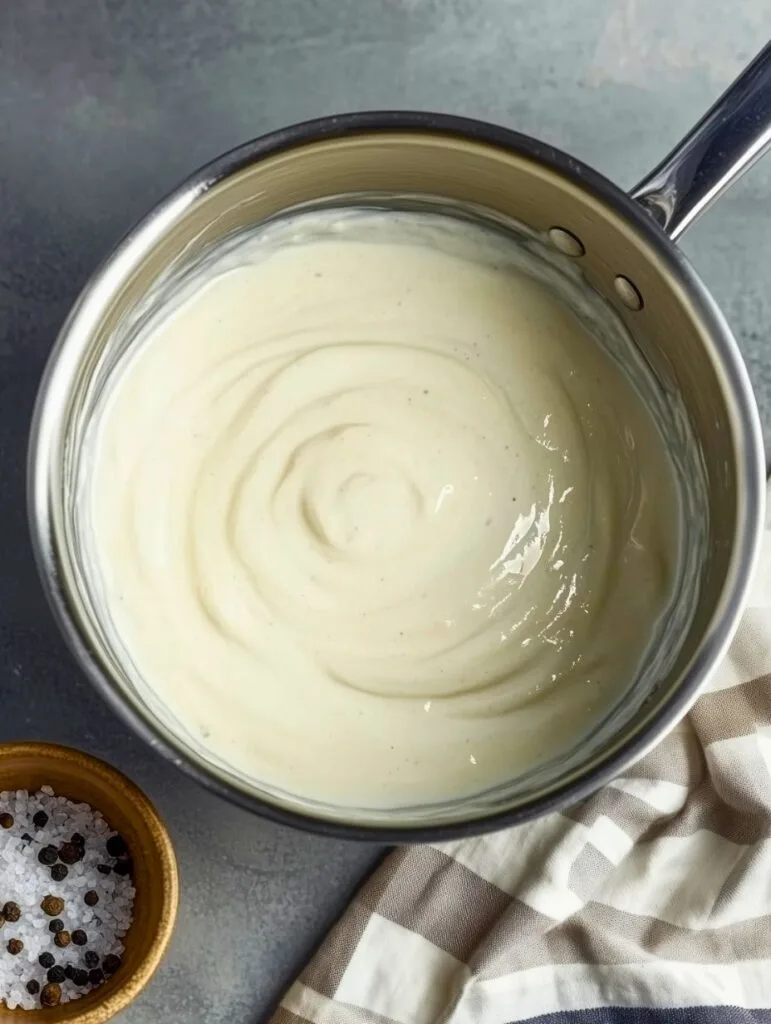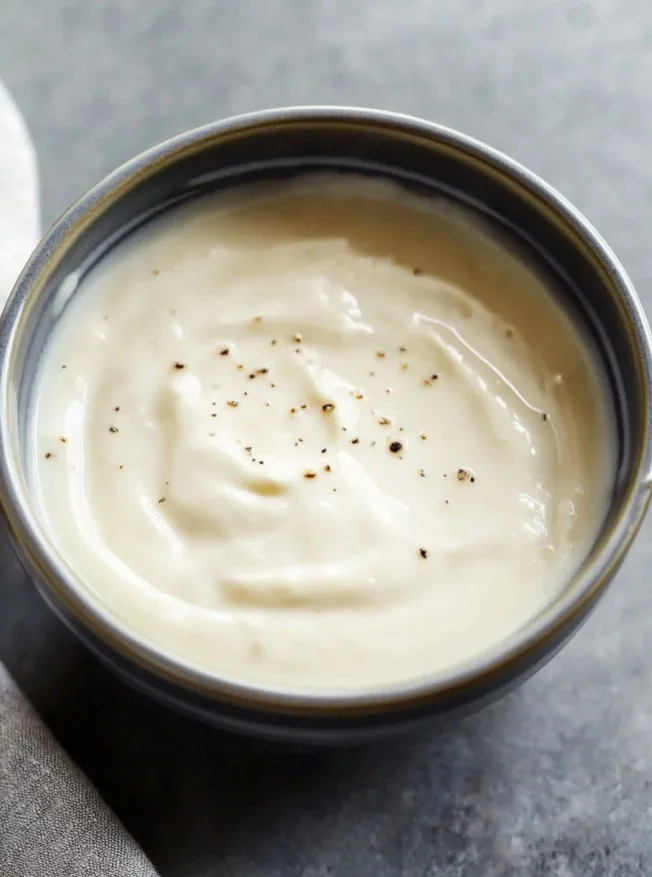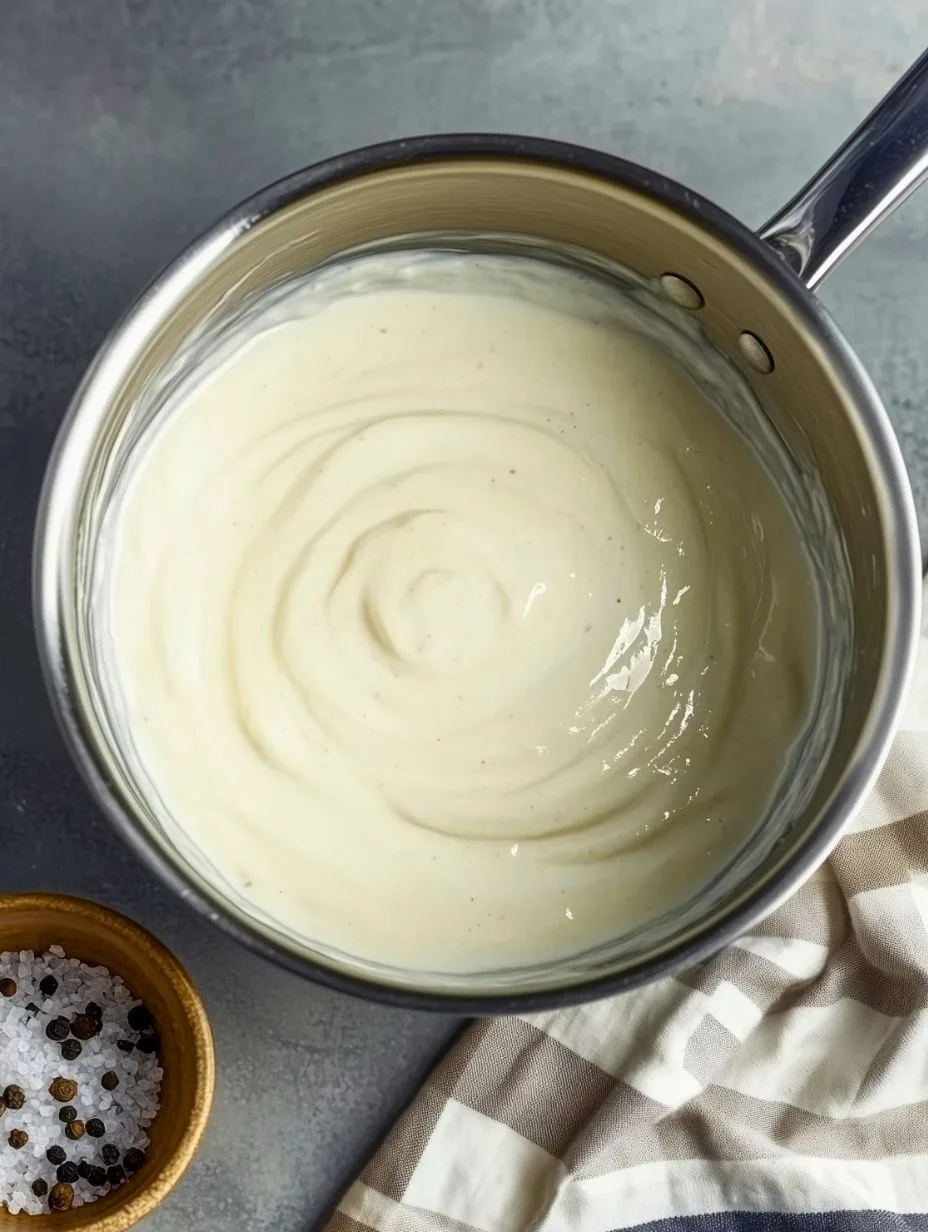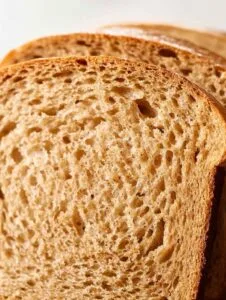A classic white sauce, known in French cuisine as Béchamel, is a culinary cornerstone that every home cook should master. With just three primary ingredients—butter, flour, and milk—you can create a silky, creamy sauce that serves as the foundation for countless dishes.[

Save This Recipe! 💌
We'll email this post to you so you can cook it later!
Cuisine: French
Prep Time: 10 minutes
Cook Time: 5 minutes
Total Time: 15 minutes
Servings: 1 cup
Here’s a great video that shows the process of making basic white sauce.
Why You’ll Love Making It
- A Culinary Building Block: This is one of the five “mother sauces” in French cuisine, meaning it’s a base for many other sauces. Master this, and you’ve unlocked the secret to creamy pastas, rich gratins, and savory pies.
- Incredibly Versatile: Use it as-is, or customize it with cheese, herbs, or spices to suit any dish.
- Simple & Budget-Friendly: Made with common pantry staples, it’s far more economical and delicious than any store-bought alternative.
- Quick to Prepare: This sauce comes together in about 15 minutes, making it perfect for a weeknight meal.
- No Special Equipment Needed: All you need is a saucepan and a whisk to create this liquid gold.

Ingredients
- 2 tablespoons unsalted butter: This provides a rich flavor and is the foundation of the roux. The fat coats the flour particles, preventing lumps. If you only have salted butter, use it and reduce the amount of added salt.
- 2 tablespoons all-purpose flour: This is the thickening agent. When cooked with butter to form a roux, it gives the sauce its body and silky consistency.
- 1 cup 2% milk: This is the primary liquid. For a richer, creamier sauce, feel free to use whole milk. For best results, use milk that is slightly warmed or at room temperature, though cold milk can also work with careful whisking.
- 1/8 teaspoon salt: Essential for enhancing the overall flavor. Adjust to your personal taste.
- Dash of white pepper: White pepper is traditional as it blends invisibly into the sauce, but a dash of black pepper works perfectly fine if that’s what you have.
Instructions
Step 1: Create the Roux
In a small saucepan, melt the butter over medium-low heat. Ensure it melts completely without browning. Sprinkle the flour over the melted butter. Immediately begin to whisk the flour and butter together until they form a smooth, thick paste. This mixture is called a “roux.” Continue to cook, whisking constantly, for about 1-2 minutes. This crucial step cooks out the raw taste of the flour and will give your sauce a clean, creamy flavor instead of a pasty one. The roux should be bubbly and smell slightly nutty.
Step 2: Gradually Add the Milk
Remove the saucepan from the heat for a moment. This helps prevent lumps, especially for beginners. Slowly pour in about a quarter of the milk while whisking vigorously. The mixture will seize up and become very thick at first—this is normal. Once it’s smooth, continue to gradually add the remaining milk in a slow, steady stream, whisking constantly until all the milk is incorporated and the sauce is completely smooth. Make sure to whisk into the corners of the pan.
Step 3: Thicken the Sauce
Return the saucepan to medium heat. Bring the sauce to a gentle simmer, stirring frequently. You should see small bubbles breaking the surface. Let it simmer for another 2-3 minutes, stirring, until the sauce has thickened enough to coat the back of a spoon. If you draw a line through the sauce on the spoon with your finger, it should hold its shape. The sauce will continue to thicken slightly as it cools.
Step 4: Season and Serve
Remove the sauce from the heat and stir in the salt and white pepper. Taste and adjust the seasoning if necessary. Use your beautiful Béchamel sauce immediately in your desired recipe.
Flavor Variations and Boosters:
- Mornay (Cheese) Sauce: Once the sauce is thickened and off the heat, stir in 1/2 cup of grated cheese like Gruyère, cheddar, or Parmesan until melted. A pinch of dry mustard or nutmeg complements the cheese beautifully.
- Herbs and Aromatics: For a more complex flavor, you can infuse the milk before you begin. Gently heat the milk with a bay leaf, a few peppercorns, and a halved onion studded with a clove. Let it steep for 20 minutes, then strain the aromatics out before adding the milk to the roux.
- Garlic and Onion: Sauté a minced garlic clove or finely chopped shallots in the butter for a minute before adding the flour.
- Spices: A pinch of nutmeg is a classic addition that enhances the creamy flavor. For a bit of heat, consider a dash of cayenne pepper or paprika.
FAQs
Why is my white sauce lumpy and how can I fix it?
Lumps typically happen when the milk is added too quickly or isn’t whisked in thoroughly. To fix a lumpy sauce, you can strain it through a fine-mesh sieve or use an immersion blender for a few seconds until smooth.
How can I make the sauce thicker or thinner?
For a thicker sauce (ideal for soufflés or binding casseroles), increase the butter and flour to 3 tablespoons each per cup of milk. For a thinner sauce (great for creamy soups or light gravies), reduce the butter and flour to 1 tablespoon each per cup of milk.
My sauce tastes like raw flour. What went wrong?
This means the roux wasn’t cooked long enough before the milk was added. It’s important to let the butter and flour cook together for at least a minute to toast the flour and eliminate that raw taste.
Can I make white sauce ahead of time?
Yes. Store it in an airtight container with plastic wrap pressed directly onto the surface of the sauce to prevent a skin from forming. It will keep in the refrigerator for up to 3 days. Reheat gently over low heat, whisking continuously. You may need to add a splash of milk to thin it back to its original consistency.

Easy White Sauce
Ingredients
- 2 tbsp Unsalted Butter
- 2 tbsp All-purpose Flour
- 1 cup 2% Milk
- ⅛ tsp Salt
- Dash of White Pepper
Instructions
- In a small saucepan, melt the butter over medium-low heat. Ensure it melts completely without browning. Sprinkle the flour over the melted butter. Immediately begin to whisk the flour and butter together until they form a smooth, thick paste. This mixture is called a "roux." Continue to cook, whisking constantly, for about 1-2 minutes. This crucial step cooks out the raw taste of the flour and will give your sauce a clean, creamy flavor instead of a pasty one. The roux should be bubbly and smell slightly nutty.
- Remove the saucepan from the heat for a moment. This helps prevent lumps, especially for beginners. Slowly pour in about a quarter of the milk while whisking vigorously. The mixture will seize up and become very thick at first—this is normal. Once it's smooth, continue to gradually add the remaining milk in a slow, steady stream, whisking constantly until all the milk is incorporated and the sauce is completely smooth. Make sure to whisk into the corners of the pan.
- Return the saucepan to medium heat. Bring the sauce to a gentle simmer, stirring frequently. You should see small bubbles breaking the surface. Let it simmer for another 2-3 minutes, stirring, until the sauce has thickened enough to coat the back of a spoon. If you draw a line through the sauce on the spoon with your finger, it should hold its shape. The sauce will continue to thicken slightly as it cools.
- Remove the sauce from the heat and stir in the salt and white pepper. Taste and adjust the seasoning if necessary. Use your beautiful Béchamel sauce immediately in your desired recipe.
Notes
- Mornay (Cheese) Sauce: Once the sauce is thickened and off the heat, stir in 1/2 cup of grated cheese like Gruyère, cheddar, or Parmesan until melted. A pinch of dry mustard or nutmeg complements the cheese beautifully.
- Herbs and Aromatics: For a more complex flavor, you can infuse the milk before you begin. Gently heat the milk with a bay leaf, a few peppercorns, and a halved onion studded with a clove. Let it steep for 20 minutes, then strain the aromatics out before adding the milk to the roux.
- Garlic and Onion: Sauté a minced garlic clove or finely chopped shallots in the butter for a minute before adding the flour.
- Spices: A pinch of nutmeg is a classic addition that enhances the creamy flavor. For a bit of heat, consider a dash of cayenne pepper or paprika.
Save This Recipe! 💌
We'll email this post to you so you can cook it later!







hey so when making the roux, do you think it’s cool to use whole wheat flour instead? trying to make it a bit healthier here. thanks!
BakerBob82, you can definitely use whole wheat flour. It might change the texture slightly, but it’s worth trying for a healthier option!
i always mess up my roux, it gets lumpy 🙁
White pepper though? I always use black for more flavor, anyone else think it makes a difference?
this sauce sounds too plain, needs more spices or something.
roux sounds like a dog’s name, lol
Love this simple sauce recipe, Sandra Clare! It’s perfect for my cooking show. Can’t wait to try it out on camera.
white sauce is just empty calories, guys. make something green for once.
can i just buy this sauce in a store somewhere, making it sounds hard
Actually, making a roux is foundational in cooking, and this is a solid basic recipe. Well done, Sandra.
nice! gonna try this sauce on my grilled chicken tonight.
Interesting technique. The process of making a roux has such rich historical significance in culinary arts.
Loved this recipe! Tried it while staying in a vacation rental, and it was a hit. Thanks, Sandra Clare!
Butter and milk, huh? Not very vegan-friendly. Ever heard of plant-based?
Could you use a hand mixer instead of whisking by hand, or would that ruin the texture of the roux?
The simplicity of this sauce could pair well with dramatic, complex dishes. A nice juxtaposition.
imagine using this sauce as a drink mixer, wonder how that would taste lol
I appreciate the clear instructions; however, it’s ‘whisk’, not ‘wisk’. Common mistake.
This sauce with pasta? Heaven! Can’t wait to try.
The science behind the emulsion of fats and liquids in cooking is fascinating. This is a great practical application.
gonna try this with almond milk, hope it works out!
Reminds me of how my grandmother used to make her sauces. Very traditional.
Interesting, might add this to my post-workout meal prep.
roux, the unsung hero in the kitchen just like my favorite sidekick characters.
The act of cooking is akin to a form of art. Each step in this recipe is an artistic decision.
why does it thicken? is it the flour or the milk that causes that?
It’s actually the flour reacting with the liquid. It absorbs the moisture and expands, causing the sauce to thicken.
imagine making this sauce in a haunted kitchen, spooky but delicious!